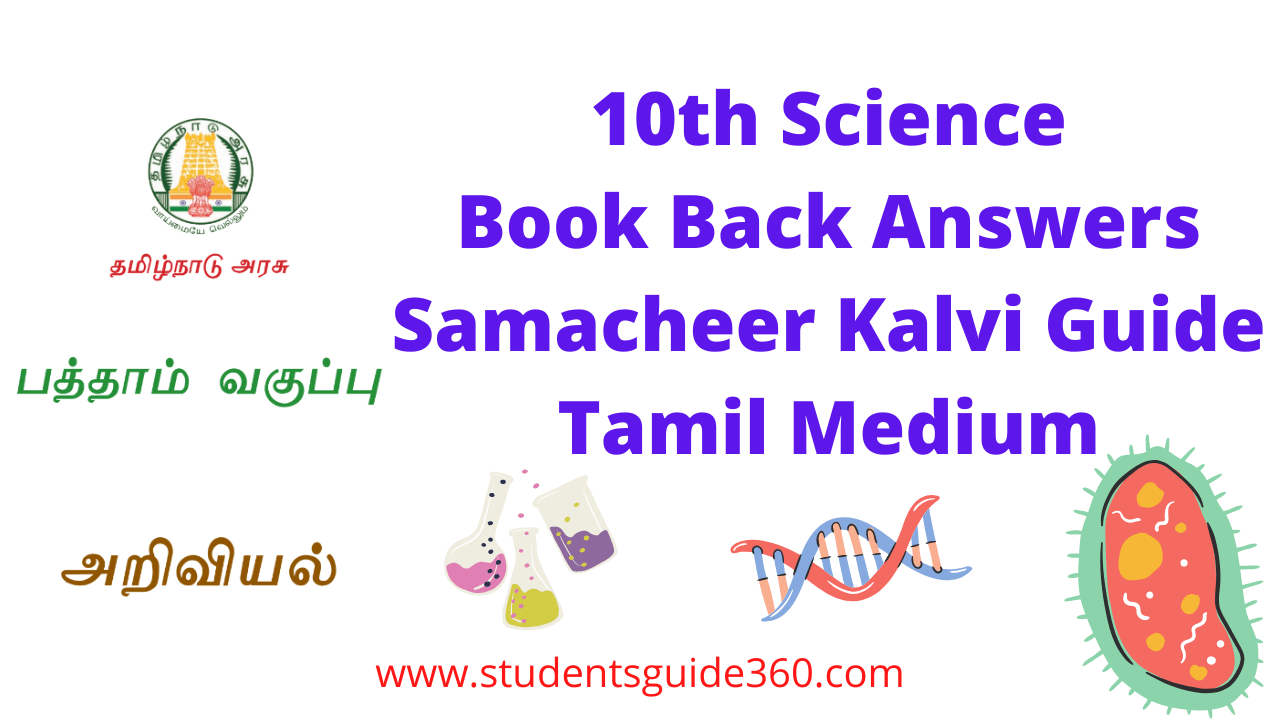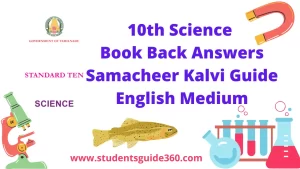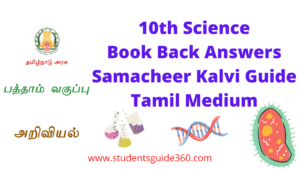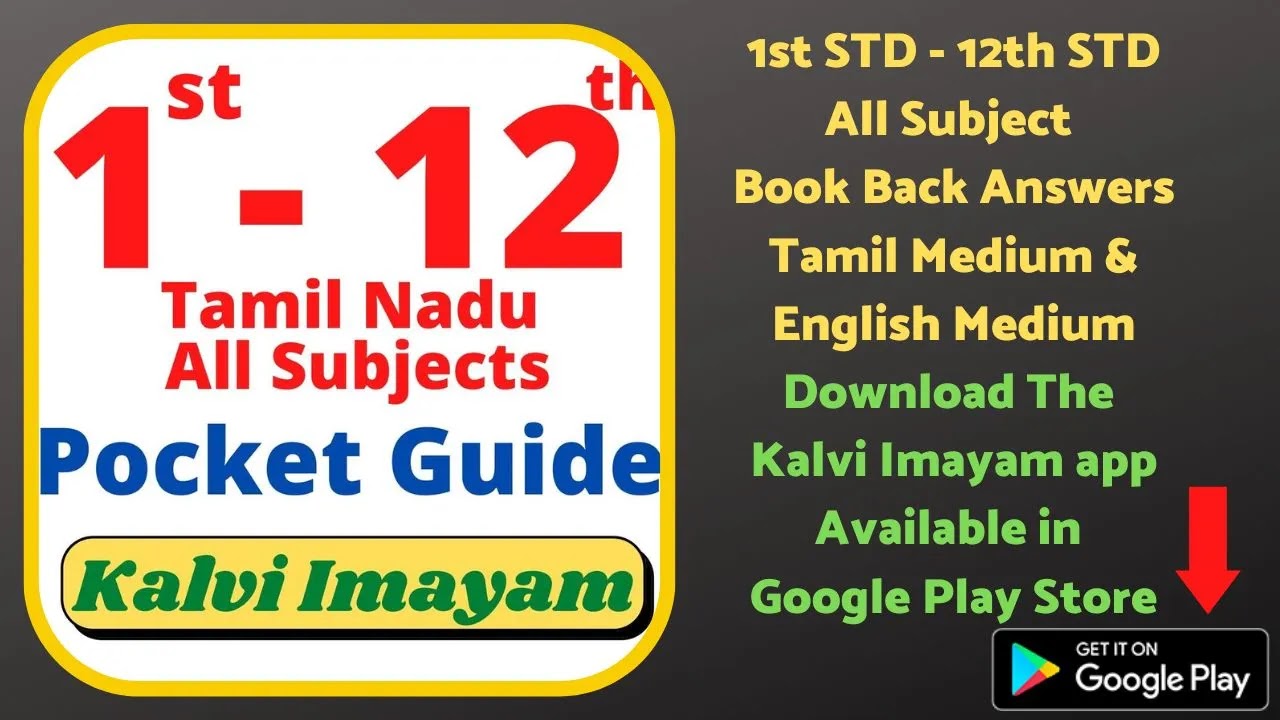10th Science Guide Unit 12 PLANT ANATOMY AND PLANT PHYSIOLOGY
10th Standard Science Biology Lesson 12 PLANT ANATOMY AND PLANT PHYSIOLOGY Book Back Answers | Samacheer Kalvi Guide
10th Science Guide Unit 12 PLANT ANATOMY AND PLANT PHYSIOLOGY. 10th Standard Science Physics Answers, 10th Chemistry Book Back Answers, 10th Biology Book Back Answers Tamil Medium and English Medium. 10th All Subject Text Books. Class 10 Science Samacheer kalvi guide. 10th Tamil Samacheer Kalvi Guide. 10th Science Unit 5. PHYSICS Book back answers.
- 10th Science Samacheer Kalvi Guide TM & EM All Unit Book Back Answers.
- 1st to 12th All Subject Book Back Answers – Download Kalvi Imayam app
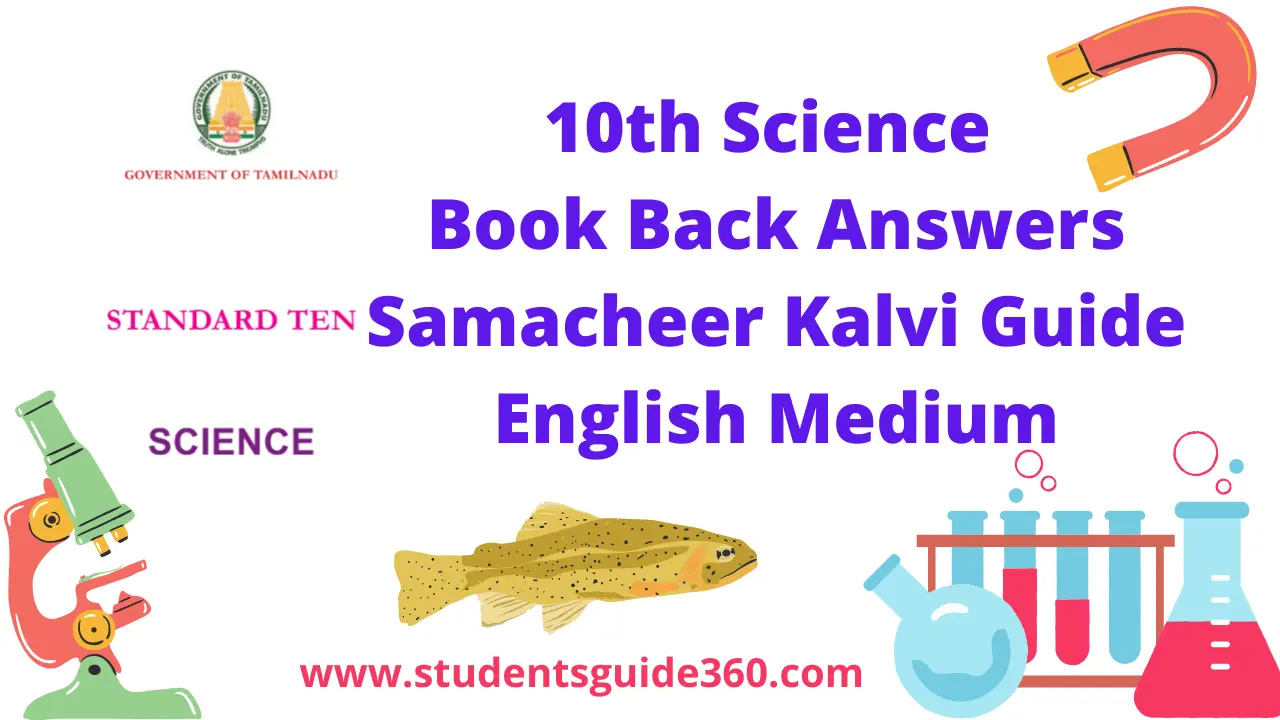
12 PLANT ANATOMY AND PLANT PHYSIOLOGY
I. Choose the best answer
1. Casparian strips are present in the __________ of the root.
- cortex
- pith
- pericycle
- endodermis
Ans ; Endodermis
2. The endarch condition is the characteristic feature of
- root
- stem
- leaves
- flower
Ans ; Stem
3. The xylem and phloem arranged side by side on same radius is called __________.
- radial
- amphivasal
- conjoint
- None of these
Ans ; Conjoint
4. Which is formed during anaerobic respiration
- Carbohydrate
- Ethyl alcohol
- Acetyl CoA
- Pyruvate
Ans ; Ethyl alcohol
5. Kreb’s cycle takes place in
- chloroplast
- mitochondrial matrix
- stomata
- inner mitochondrial membrane
Ans ; Mitochondrial matrix
6. Oxygen is produced at what point during photosynthesis?
- when ATP is converted to ADP
- when CO2 is fixed
- when H2O is splitted
- All of these
Ans ; When H2O is splitted
II. Fill in the blanks
- Cortex lies between __________. Ans ; Epidermis and Endodermis
- Xylem and phloem occurring on the same radius constitute a vascular bundle called __________. Ans; Conjoint bundle
- Glycolysis takes place in __________. Ans ; Cytoplasm
- The source of O2 liberated in photosynthesis is __________. Ans ; Photolysis of water
- __________ is ATP factory of the cells. Ans ; Mitochondria
III. State whether the following statements are true or false: If false correct the statement.
- Phloem tissue is involved in the transport of water in plant. ( False )
- Phloem tissue is involved in the transport of food in plant.
- The waxy protective covering of a plant is called as cuticle. ( True )
- In monocot stem cambium is present in between xylem and phloem. ( False )
- In dicot stem cambium is present in between xylem and phloem.
- Palisade parenchyma cells occur below upper epidermis in dicot root. ( False )
- Palisade parenchyma cells occur below upper epidermis in dicot leaf.
- Mesophyll contains chlorophyll. ( True )
- Anaerobic respiration produces more ATP than aerobic respiration. ( False )
- Aerobic respiration produces more ATP than anaerobic respiration
IV. Match the following
- Amphicribal – Dracaena
- Cambium – Translocation of food
- Amphivasal – Fern
- Xylem – Secondary growth
- Phloem – Conduction of water
Ans ; 1 – C, 2 – D, 3 – A, 4 – E, 5 – B
V. Answer in a sentence
1. What is collateral vascular bundle?
- Vascular bundle in which, xylem lies towards the centre and phloem lies towards the periphery is called collateral vascular bundle.
2. Where does the carbon that is used in photosynthesis come from?
- Carbon that is used in photosynthesis come from atmosphere in the form of CO2.
3. What is the common step in aerobic and anaerobic pathway and where is it occur in a cell?
- Glycolysis is the common step in aerobic and anaerobic pathway. Glycolysis takes place in cytoplasm of the cell.
4. Name the phenomenon by which carbohydrates are oxidized to release ethyl alcohol.
- The phenomenon by which carbohydrates are oxidized to release ethyl alcohol is fermentation.
VI. Short Answer Questions
1. Give an account on vascular bundle of dicot stem.
- Vascular bundles of dicot stem are conjoint collateral, endarch and open.
- They are arranged in the form of a ring around the pith.
2. Write a short note on mesophyll.
- In a leaf, the tissue present between the upper and lower epidermis is called mesophyll.
- It is differentiated into palisade parenchyma and Spongy parenchyma.
3. Draw and label the structure of oxysomes.

4. Name the three basic tissue system in flowering plants.
- Dermal (or) Epidermal tissue system
- Ground tissue system
- Vascular tissue system
5. What is photosynthesis and where in a cell does it occur?
- Photosynthesis is a process by which autotrophic organisms utilize the energy from sunlight to synthesize their own food.
- Here, CO2 combines with water in the presence of sunlight & chlorophyll to form carbohydrates.
- It occurs in the chloroplast.
6. What is Respiratory quotient?
- Respiratory Quotient (R.Q.) is the ratio of volume of carbon dioxide liberated and the volume of oxygen consumed during respiration.
- R.Q. = volume of CO2 liberated / volume of O2 consumed
7. Why should the light dependent reaction occur before the light independent reaction?
- During light independent reactions, CO2 is reduced into carbohydrates with the help of ATP and NADPH2 which is generated during light dependent reaction.
- So, light dependent reaction should occur before the light independent reaction.
- Write the reaction for photosynthesis.
| 6CO2 + 6H2O
|
Light ——————–> Chlorophyll |
C6H12O6 + 6O2 ↑ Glucose Oxygen |
10th Science Guide Unit 12 PLANT ANATOMY AND PLANT PHYSIOLOGY
VII. Long Answer Questions
1. Differentiate the following.
- a) Monocot root and Dicot root
| Tissues | Dicot Root (Bean) | Monocot Root (Maize) |
| Number of xylem | Tetrarch | Polyarch
|
| Cambium | Present (during secondary growth only) | Absent
|
| Secondary growth | Present | Absent
|
| Pith | Absent | Present
|
| Conjunctive tissue | Parenchyma | Sclerenchyma
|
- b) Aerobic and Anaerobic respiration:
| Aerobic respiration | Anaerobic respiration |
| 1) Aerobic respiration takes place in the presence of oxygen. | 1) Anaerobic respiration takes place in the absence of oxygen. |
| 2) It occurs in most plants and animals | 2) It occurs in some bacteria. |
| 3) Carbohydrate is completely oxidized into carbon dioxide, water and energy | 3) Glucose is converted into ethanol (in plants) or lactate (in some bacteria) |
| 4) CH12O6 + 6O2→ 6CO2 + 6H2O + ATP | 4) C6H12O6→ 2 CO2 + 2 C2H5OH + Energy (ATP) |
2. Describe and name three stages of cellular respiration that aerobic organisms use to obtain energy from glucose.
Glycolysis:
- It is the breakdown of one molecule of glucose into two molecules of pyruvic acid.
- It takes place in cytoplasm of the cell.
- It is the first step of both aerobic and anaerobic respiration.
Krebs cycle (or) Tricarboxylic Acid cycle (TCA):
- It occurs in mitochondria matrix.
- At the end of glycolysis, two molecules of pyruvic acid enter into mitochondria.
- The oxidation of pyruvic acid into CO2 and water takes place through this cycle.
Electron Transport chain (ETC):
- This is accomplished through a system of electron carrier complex located on the inner membrane of the mitochondria.
- NADH2 and FADH2 molecules formed during glycolysis and Krebs cycle are oxidised to NAD+ and FAD+ to release the energy via electrons.
- The electrons release energy, which is trapped by ADP to synthesize ATP.
- This is called oxidative phosphorylation. Here O2 gets reduced to water
3. How does the light dependent reaction differ from the light independent reaction? What are the end products and reactants in each? Where does each reaction occur within the chloroplast?
| Light dependent Reaction | Light independent Reaction |
| This reaction takes place in the presence of light energy | It takes place in the absence of light. |
| Here, photosynthetic pigments absorb light energy and convert it into ATP & NADPH2 | Here, CO2 is reduced into carbohydrates with
the help of light-generated ATP & NADPH2 |
| Reactants : sunlight, water, NADP+, ADP | Reactants : ATP, NADPH2, O2 |
| End products: ATP, NADPH2, O2 | End products: Carbohydrate, ADP, NADP+ |
Place of Occurrence in the chloroplast
| It occurs in the thylakoid membrane (grana) of the chloroplast. | It occurs in the stroma of the chloroplast. |
VIII. Higher Order Thinking Skills (HOTS)
1. The reactions of photosynthesis make up a biochemical pathway.
A) What are the reactants and end products of light and dark reaction of photosynthesis?
| Light Reaction | Dark Reaction | |
| Reactants
|
sunlight, H2O, NADP+, ADP | O2, ATP and NADPH2 |
| Products | ATP, NADPH2 and O2 | Carbohydrate, ADP and NADP+ |
- B) Explain how the biochemical pathway of photosynthesis recycles many of its own reactions and identify the recycled reactants.
Two important steps take place during photosynthesis are Light reactions and Dark reactions (or) Calvin cycle.
- ATP and NADPH2 are formed by light reactions using sunlight. It is used by Calvin cycle to produce glucose.
- Calvin cycle oxidizes NADPH2 and ADP to NADP+ and ATP. These are again used by light reaction and reduced to NADPH2 and ATP with the help of a water molecule.
- In this way, photosynthesis recycles its own reaction in a series.
2. Where do the light dependent reaction and the Calvin cycle occur in the chloroplast?
- Light dependent reaction takes place in thylakoid membranes (grana) of chloroplast.
- Calvin cycle or Light independent reaction takes place in stroma of chloroplast.

